Managing resources efficiently is like threading the needle—get it right, and the whole project comes together seamlessly. It's more than just allocating tasks, it's about understanding capacities, dependencies, nuances, and potential impacts to your project.
These seven resource management techniques offer ways to put resource management into practice and make it less of a theoretical process, so the next time your developer doesn’t have capacity to complete a task, you’ll know how to avoid project delays.
What Is Resource Management?
Resource management is the art and science of ensuring that projects have the right resources (human resources, financial resources, materials, etc.) in the right places and at the right times.
This isn't just about assigning tasks. It's about understanding the bigger picture: the strengths and weaknesses of your team, the ebb and flow of demand, and the available resources and potential risks or roadblocks on the horizon.
When executed well, resource management ensures a seamless project execution, avoiding overburdened teams or underutilized talents and focusing on optimization at every milestone. It's a balance of foreseeing challenges, adapting to changes, and ensuring that both the project's objectives and the team's well-being are in sync.
The resource management process is typically conducted using resource management software or project management software.
Why are Resource Management Techniques Important?
Why is mastering resource management techniques such a big deal? Let's break it down.
First, resources—be they time, people, or tools—are finite. In an era where "doing more with less" is not just a catchy phrase but a business imperative, effective resource management ensures we're squeezing value out of every penny, every tool, and every team member in real-time.
Using these techniques, you can align your project's goals with the realities of your resources, ensuring the best possible outcomes.
Second, nothing tanks morale faster than an overburdened team or, conversely, a team that's twiddling its thumbs waiting for tasks.
Proper resource management is pivotal in ensuring workloads are balanced and that team members are engaged, productive, and, most importantly, not on the brink of burnout. It's about getting the best shot at project success while maintaining a happy, motivated team.
Last, the unpredictable nature of the business landscape means we're often faced with unforeseen challenges—sudden shifts in project scope, unexpected resource shortages, or last-minute changes from stakeholders.
With a robust grasp of resource management tools and techniques, you're better equipped to navigate these challenges. Instead of being caught off-guard, you can pivot, adjust, and realign your resources as needed, ensuring consistent project progress even amidst uncertainties.
Read more about why resource management is important here.
What Are Resource Management Techniques?
Resource management techniques are strategies and best practices for navigating the complexities of allocating, monitoring, and adjusting your project resources throughout the entire project life cycle.
They aren't one-size-fits-all, and instead offer frameworks and methods that you can tailor and use as needed to fit each project's unique needs and nuances. Some resource management strategies might be better suited for small, agile projects, while others suit larger, more structured endeavors.
With these techniques, project managers can make informed decisions and offer better project planning and capacity planning, ensuring every project sails smoothly from inception to completion.
7 Resource Management Techniques
Let's dive deeper into each resource management technique, understanding its essence and its application in our day-to-day management tasks.
- Resource Forecasting
- Resource Planning
- Resource Allocation
- Resource Scheduling
- Resource Leveling
- Resource Utilization
- Resource Smoothing
1. Resource Forecasting
Resource forecasting is the process of estimating the resources required for a project in its future stages. By examining past projects, current trends, and team capacities, resource forecasting allows you to anticipate needs and avoid potential pitfalls, ensuring you're not caught off-guard when demands surge or shift.
It also allows you to set a preliminary idea of the required resources, helping with budget estimations and ensuring you don't get halfway through the project only to realize you're short-staffed or that you overallocated your project team.
Example: Imagine you're working on a website redesign that will last three months. Before diving into the details, you sit down and estimate the type and quantity of resources you'll need. This might involve predicting the number of designers for visuals, backend developers, and web copy content writers (who might be freelancers or full-timers).
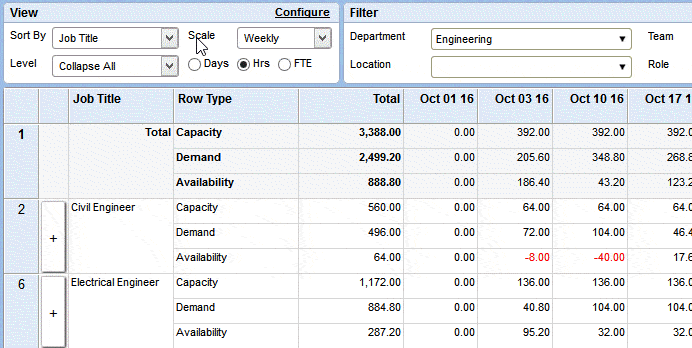
2. Resource Planning
Resource planning involves determining which types of resources (human, technical, financial) are needed, when, and in what quantities. You can then compare your resource management plan against resource capacity to ensure that all project stages have the requisite resources, and that you aren’t burning out your team by giving them more work than they have capacity for.
This isn't a one-off workflow. Regular check-ins and adjustments to your resource plans are vital as projects evolve.
Example: Let's say you're about to roll out a new software product. Resource planning would involve listing down every task (like software testing, marketing, and user training) and then matching them with the resources available.
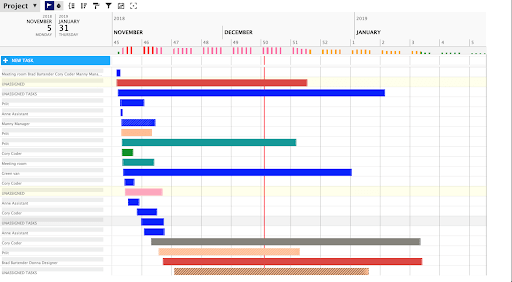
3. Resource Allocation
Resource allocation is the assignment of resources to specific tasks or phases of your project.
Here, it's essential to recognize the strengths and limitations of your team and tools. Assigning team members to tasks based on their skillset and availability keeps them motivated, keeps morale high, and, again, prevents burnout and resource wastage.
Example: Consider a digital marketing campaign. After planning, you need a graphic designer, a social media manager, and a content writer. Allocating resources would mean assigning specific tasks to each of these roles—perhaps the graphic designer is responsible for creating blog graphics and social media images. At the same time, the content writer handles blog posts and social captions.
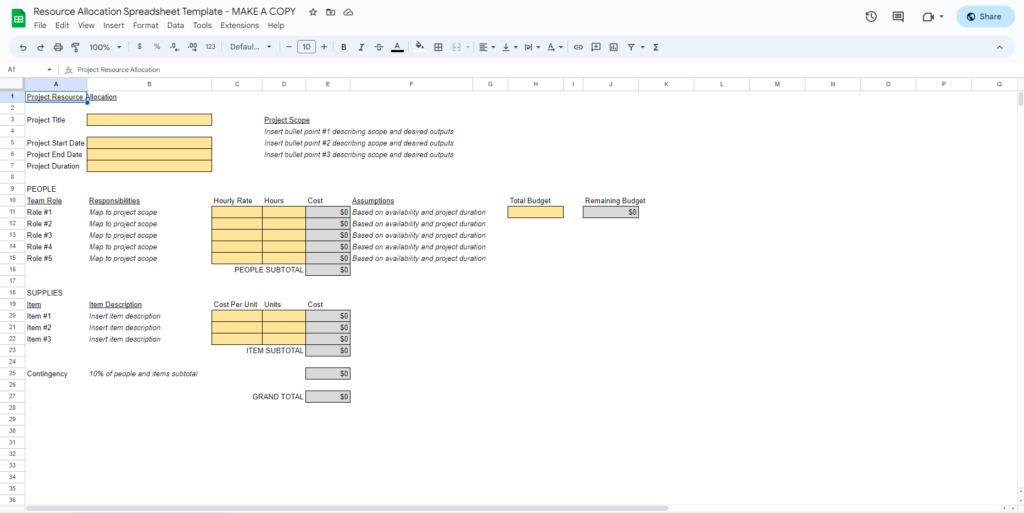
4. Resource Scheduling
Resource scheduling builds upon allocation by plotting assignments out on a calendar and detailing when and where each resource will be used. At this stage, you’ll likely use tools like Gantt charts or specialized resource management software to visualize the timeline of your resources, ensuring no overlaps or idle periods.
Example: You're developing a new mobile app. Resource scheduling in this context could involve ensuring that UI/UX designers complete their work before developers begin coding. This way, the developers aren't waiting around for design assets, and designers aren't rushed to churn out last-minute changes.
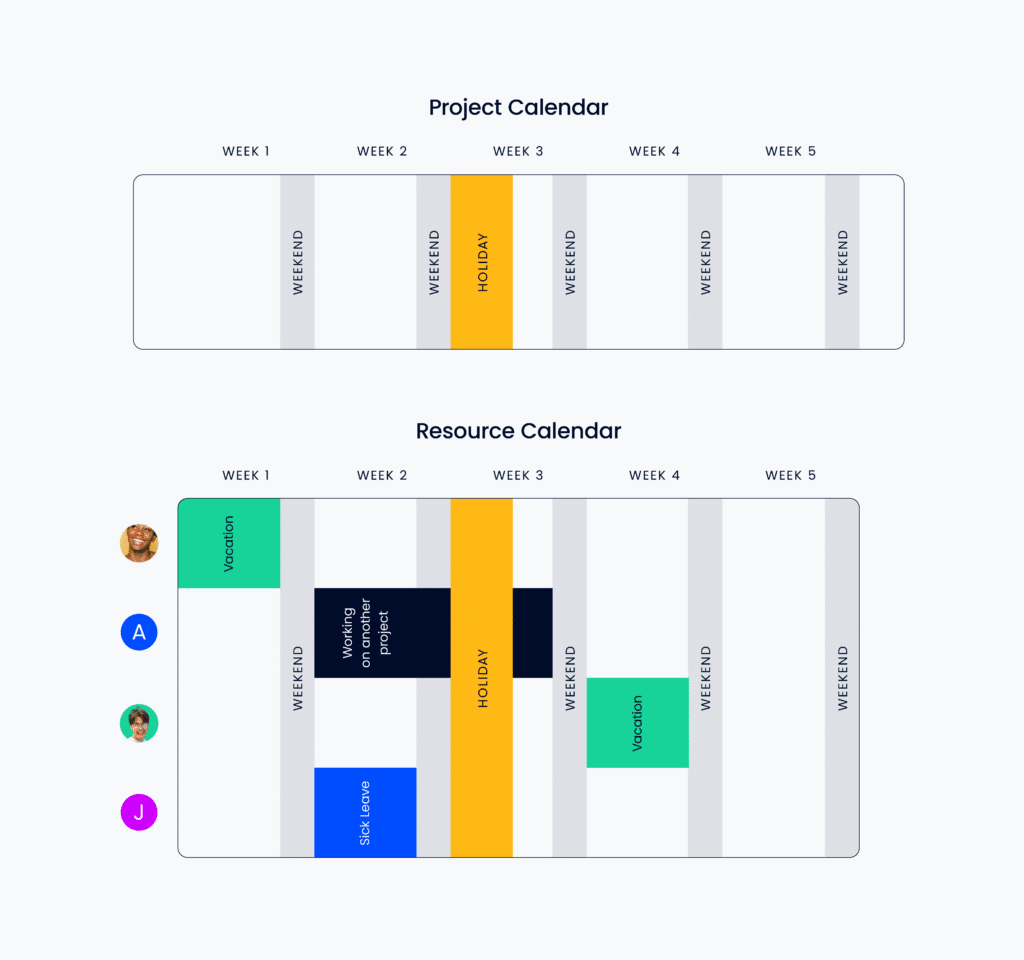
5. Resource Leveling
Resource leveling is the process of adjusting the timelines and deadlines for project tasks and activities so they can be completed by the available resources. This technique is only possible when your project schedule is flexible (if it’s not, you’d need to find other available resources who can take care of the task or deliverables, i.e. conduct resource smoothing, but more on that later).
By doing so, you avoid overwhelming certain team members with unrealistic deadlines. According to Tim Green, COO at GoTeamUp, “The key benefit here is the prevention of resource burnout, leading to a more harmonious and productive work environment.” This helps ensure consistent productivity and happier, more balanced teams.
The key benefit here is the prevention of resource burnout, leading to a more harmonious and productive work environment.
Example: In the midst of a product launch, you notice your graphic designer isn’t available to complete a task you thought they would be available for. Resource leveling would mean changing the start and end dates of that task to days when your graphic designer is available.
To demonstrate how resource leveling works, here are two Gantt charts showing the before and after results of the process.
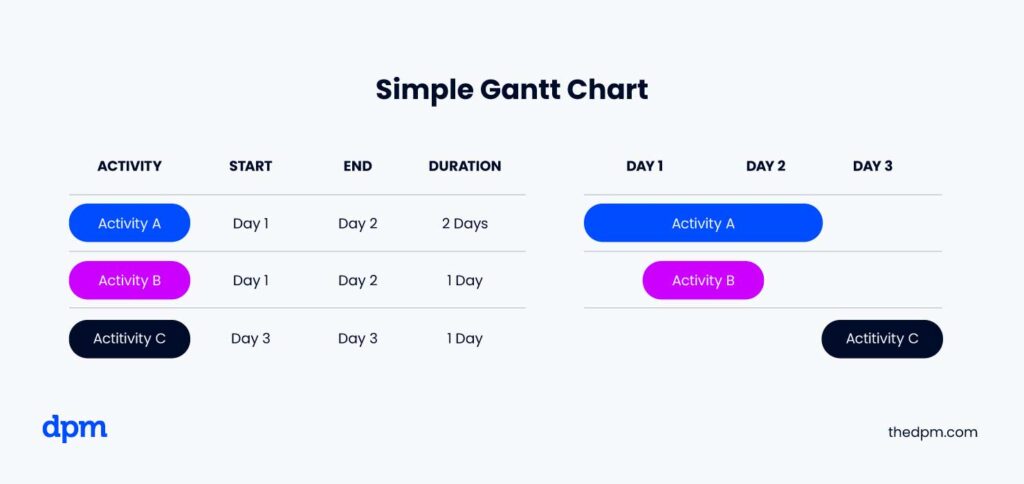
And here's what our Gantt chart looks like after resource leveling.
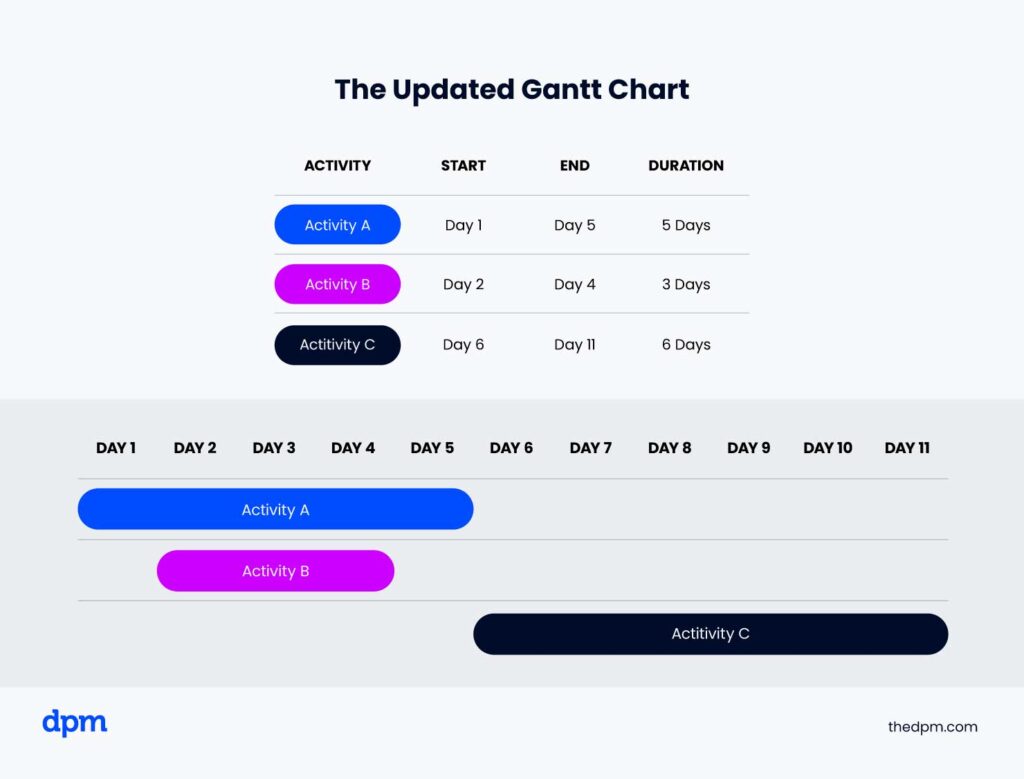
6. Resource Utilization
Resource utilization involves understanding how effectively allocated resources are being put to work. By monitoring utilization metrics like billable vs. non-billable hours or resource availability ratios, you can gauge the efficiency of your resource deployment. If you're spotting underutilized resources, it's an opportunity to recalibrate and ensure maximum productivity. This “...can lead to significant cost savings,” argues Tim Green.
Example: After launching an online course, you notice that while most of your team is fully engaged, your videographer, initially hired for course content, has some free time.
Resource utilization would involve capitalizing on this availability by creating promotional video content for the course, ensuring you're getting the most value out of every team member.
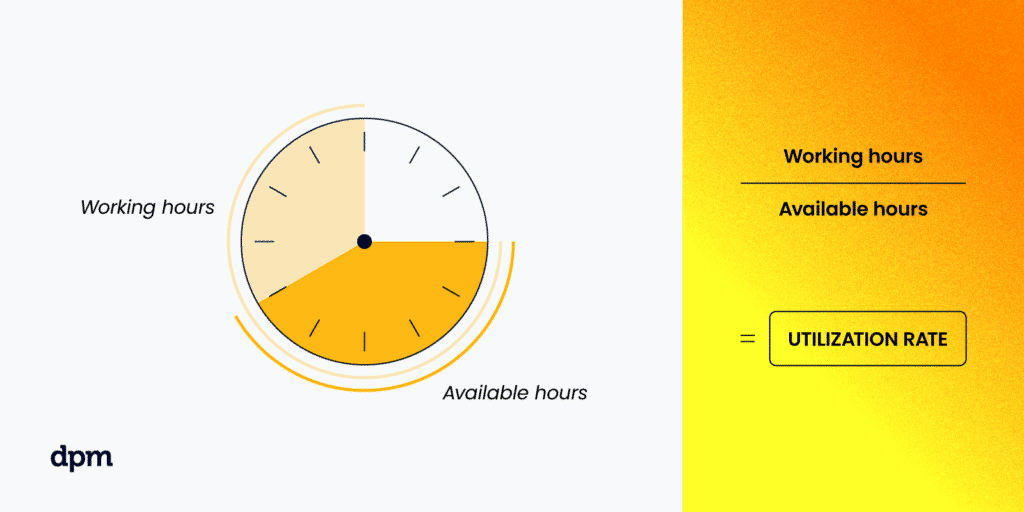
7. Resource Smoothing
Resource smoothing is the process of adjusting resource usage when your project timeline isn’t flexible. Unlike with resource leveling, you can’t just adjust the due date of the task or deliverable. Instead, you might need to ramp up resources to meet a tight deadline.
The main advantage is a more flexible and adaptable project schedule, allowing for better response[s] to changes or unforeseen circumstances.
You’ll still hit your project deadline, but the schedule (i.e. which task happens when and by whom it’s done) has enough flex that you can adjust it to address changes in personnel or resource availability.
Example: You're overseeing an e-commerce platform overhaul with a looming, inflexible deadline. However, you have some additional budget to bring on an additional developer, or maybe assign the work to a more senior developer who can work faster.
Here's a before and after showing the result of the resource smoothing process.

Here's what the project schedule would look like after resource smoothing.
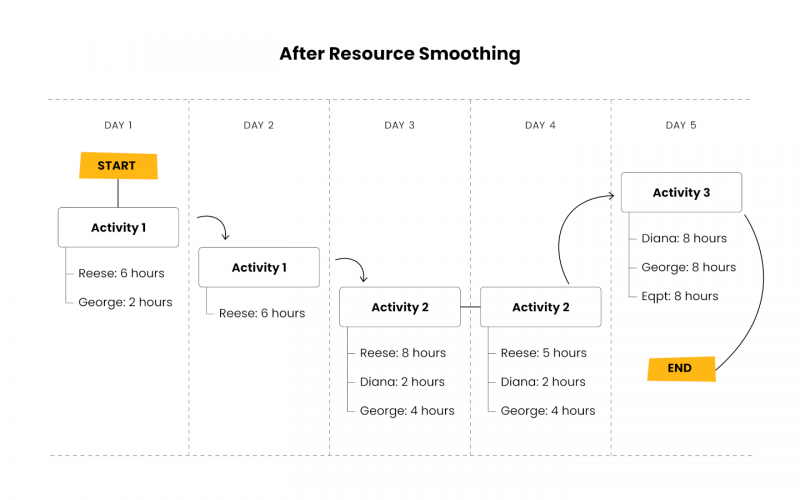
What's Next?
Have other resource management techniques that have worked for you, or maybe you're looking for more ideas? Become a member and join the conversation in Slack with 1000+ other digital project managers. You’ll also get access to 100+ templates, examples, and samples for project documents like a resource management plan.


